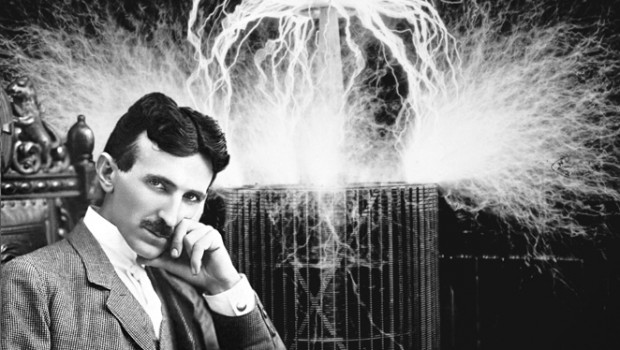
In 1900, he wrote an article for Century Magazine describing a world system of wireless communication ( Internet ) that could send telephone messages, news, music, and pictures to any part of the world.
When Tesla returned from Colorado Springs to New York, he wrote a sensational article for Century Magazine. In this detailed, futuristic vision he described a means of tapping the sun’s energy with an antenna. He suggested that it would be possible to control the weather with electrical energy. He predicted machines that would make war an impossibility. And he proposed a global system of wireless communication ( Internet ). To most people the ideas were almost incomprehensible, but Tesla was a man who could not be underestimated.
The article caught the attention of one of the world’s most powerful men, J. P. Morgan. A frequent guest in Morgan’s home, Tesla proposed a scheme that must have sounded like science fiction: a “world system” of wireless communication to relay telephone messages across the ocean; to broadcast news, music, stock market reports, private messages, secure military communications, and even pictures to any part of the world. “When wireless is fully applied the earth will be converted into a huge brain, capable of response in every one of its parts,” Tesla told Morgan.
Morgan offered Tesla $150,000 to build a transmission tower and power plant. A more realistic sum would have been $1,000,000, but Tesla took what was available and went to work immediately. In spite of what he told his investor, Tesla’s actual plan was to make a large-scale demonstration of electrical power transmission without wires. This turned out to be a fatal mistake.

J.P.Morgan
For his new construction project, Tesla acquired land on the cliffs of Long Island Sound. The site was called Wardenclyffe. By 1901 the Wardenclyffe project was under construction, the most challenging task being the erection of an enormous tower, rising 187 feet in the air and supporting on its top a fifty-five-ton sphere made of steel. Beneath the tower, a well-like shaft plunged 120 feet into the ground. Sixteen iron pipes were driven three hundred feet deeper so that currents could pass through them and seize hold of the earth. “In this system that I have invented,” Tesla explained, “it is necessary for the machine to get a grip of the earth, otherwise it cannot shake the earth. It has to have a grip so that the whole of this globe can quiver.”
As the tower construction slowly increased, it became evident that more funds were sorely needed. But Morgan was not quick to respond. Then on December 12, 1901, the world awoke to the news that Marconi had signalled the letter “S” across the Atlantic from Cornwall, England to Newfoundland. Tesla, unruffled by the accomplishment, explained that the Italian used 17 Tesla patents to accomplish the transmission. But Morgan began to doubt Tesla. Marconi’s system not only worked, it was also inexpensive.
Tesla pleaded with Morgan for more financial support, but the investor soundly refused. To make matters worse, the stock market crashed and prices for the tower’s materials doubled. High prices combined with Tesla’s inability to find enough willing investors eventually led to the demise of the project.
In 1905, after some amazing electrical displays, Tesla and his team had to abandon the Internet (wireless communication) project forever. The newspapers called it, “Tesla’s million dollar folly.”
Humiliated and defeated, Tesla experienced a complete nervous breakdown. “It is not a dream,” he protested. “It is a simple feat of scientific electrical engineering, only expensive blind, faint-hearted, doubting world.”
